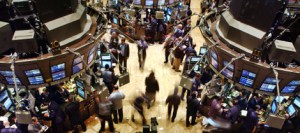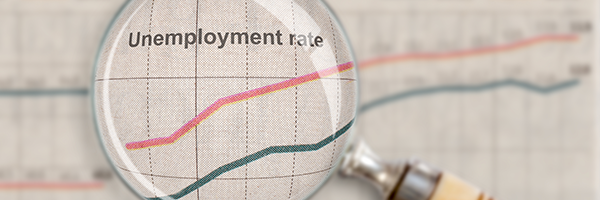
September 10, 2022 | Daily JAM |
All attention will focus on Tuesday morning’s report of Consumer Price Index inflation for August. It is likely to drive stocks higher in a continuation of Friday’s advance. But the report will not change the Federal Reserve’s mind about increasing interest rates again when the central bank’s Open Market Committee meets on Wednesday, September 21. The CPI data are likely to make the Fed, even more, resolved to raise rates by a big 75 basis points.

September 8, 2022 | Daily JAM |
I think investors and, more especially traders, should be looking for another Bear market rally to begin after the Federal Reserve’s September 21 meeting. How confident am I on this call? Nothing is ever guaranteed in the financial markets, of course, but I’d give this scenario better than 75% odds of being correct. Here’s the setup behind this call and why I’m so confident.

September 8, 2022 | Daily JAM, Morning Briefing |
Today, September 9, the European Central Bank raised its key interest rates by an unprecedented 75 basis points and central bank officials said they were prepared to deliver another jumbo interest-rate increase at their October meeting.
Today’s 75 basis point move is unprecedented for the usually very slow-moving and conservation ECB. A second 75 basis-point move would be, what? super-unprecedented. The willingness of the European Central Bank to advance a big interest rate increase as the slowing EuroZone economy faces the very real possibility of a recession due to soaring energy costs and uncertain supplies gives the U.S. Federal Reserve more policy cover for a 75 basis-point increase when it meets on September 21.

September 5, 2022 | Daily JAM, Special Reports |
Today, September 5, I’ve gone back through this Special Report to update any parts of my calendar in light of what we’ve learned about the economy, about Federal Reserve interest rate policy, and about the global economy in the last few weeks. This update includes my take on the August jobs report and on recent Fed-speak from the Jackson Hole conference and after. It is different this time. And it’s likely to “be different this time” for the next five years or so. And you need an investment strategy for that period.

August 21, 2022 | Daily JAM |
The Federal Reserve will do everything it can to talk the financial markets out of optimism about future interest rate increases.
The difference of opinion isn’t focused on the September 21 meeting. The market has pretty much decided that the central bank will raise interest rates by either 50 basis points or 75 basis points at that meeting. (The odds on the CME FedWatch tool as of Friday, August 19, were 59% for a 50-basis-point increase, and 41% for a 75 basis-point move. It’s a question of what comes after the September, November, and December Fed meetings. The market seems to have decided that the Federal Reserve will end this cycle of interest rate increases shortly after those meetings. The Fed, in recent remarks, has been trying to convince the market that the fight against inflation is likely to take longer than that. And that the market should expect further interest rate increases into 2023. This week’s central bankers conference in Jackson Hole provides a pulpit for the Fed to preach its message. And I’d expect Fed chair Jerome Powell to use his 10 a.m. Friday speech to say that the Fed isn’t thinking that its inflation fighting work is near done.

August 12, 2022 | Daily JAM |
Ho, hum. Another day another big upside move in stocks. Because we all know that the inflation rate has peaked and is coming down. After all the headline CPI inflation number on Wednesday, August 10, told us so. In July all-items inflation ran at a year-to-year rate of just 8.5%, down from the 9.1% rate in June, and below the 8.7% rate economists were expecting.
Today, August 12, the Standard & Poor’s 500 index w up 1.73%, the Dow Jones Industrial Average was higher by 1.27%, and the NASDAQ Composite ended the day up 2.-5%. The NASDAQ `100 closed higher by 2.06%. The Russell 2000 small-cap index gained 2.09%.
Given, however, that the bulk of the lower-than-expected inflation rate in July resulted from a huge drop in gasoline prices, it’s important to take a look at where oil prices (and the price of gasoline at the pump) might be headed. In the short run there’s nothing so likely to derail this rally than a return to $4.00 a gallon PLUS gas prices.

August 10, 2022 | Daily JAM, Morning Briefing |
The annual rate of inflation as measured by the headline Consumer Price Index (CPI) dipped in July to 8.5%. That was down from June’s annual rate of 9.1%. Economists had expected the inflation rate to drop to 8.7% However, the news wasn’t as positive on the core inflation front. This measure, which strips out more volatile energy and food prices rose at a 5.9% annual rate in July. That’s unchanged from the June rate. The divergence in the headline and core inflation numbers is all about gasoline.

August 3, 2022 | Daily JAM |
The Purchasing Managers Index (PMI) survey for non-manufacturing (AKA services) from the Institute for Supply Management showed a surprise pickup in July. The services index rebounded to 56.7 in July from 55.3 in June, the ISM reported on Wednesday, August 3. This put an end to a string of three straight monthly drops in the index. (In this index any reading above 50 indicates expansion. Below 50 indicates contraction.) Economists polled by Reuters had forecast a decrease in the non-manufacturing PMI to 53.5. This positive surprise comes after the Monday report from the ISM that the manufacturing sector showed a drop in July.

August 3, 2022 | Daily JAM, Morning Briefing |
Credit card debt rose in the United States from April through June by $46 billion, a 5.5% increase over the first quarter, as Americans borrowed billions of dollars to continue spending, according to a report on Tuesday, August 2, from the Federal Reserve Bank of New York. The increase of 13% from the second quarter of 2021 to the second quarter of 2022 was the biggest jump in more than 20 years.

July 21, 2022 | Daily JAM |
Initial claims for unemployment totaled 251,000 for the week ended July 16, up 7,000 from the week before, the Labor Department reported today, July 21. Economists were looking for 240,000 initial claims. That was the highest weekly number since November 13, 2021 The slight increase in initial claims is the latest sign that the tight labor market is getting less tight.

July 14, 2022 | Daily JAM, Videos |
My one-hundred-and-fifty-seventh YouTube video “Inflation isn’t about to get better” went up today. Yesterday, we had new CPI inflation numbers, and the bar keeps pushing higher with annual inflation reaching 9.1% in June. I think if you are making investing plans based on an expectation that inflation will be getting better soon, you’re flat out wrong. Here’s why: the Russian invasion of Ukraine continues to drive up commodity prices across the board, which will keep having a huge impact on inflation numbers. People are now expecting a 1% increase in interest rates from the Fed at the July meeting. The size of that move is an indication of exactly how difficult the Fed thinks it will be to get inflation under control.

July 13, 2022 | Daily JAM |
In June Starbucks and Dunkin’ saw a year-over-year drop in monthly visits of 7.8% and 4.1%, respectively.














